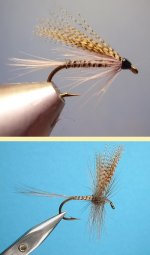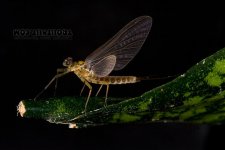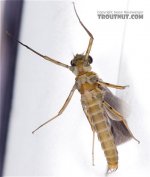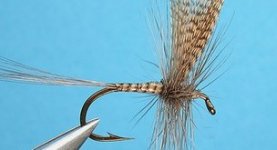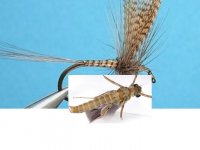JackM
Moderator
Staff member
- Joined
- Sep 9, 2006
- Messages
- 17,315
Gordon was an interesting character. Though he was good with children and kept a few firm friends, he was taciturn and reclusive, and despite the many letters he wrote (some of which have been preserved for us by John McDonald in The Complete Fly Fisherman: The Notes and Letters of Theodore Gordon) he was secretive about his fly tying methods, almost to the point of paranoia. He had a nervous energy that was fuelled by hand-twisted cigarettes and he took the odd glass of spirits to bolster up his morale, but his character remains elusive.
In 1890, when Gordon turned 36, American fly fishermen were still wedded to the wet fly. Gordon fished wet too, but unlike many of his fellows, he fished upstream, and he noticed that trout would take the fly avidly in the few moments that it floated at the beginning of a cast. This prompted him to write to F.M. Halford, who responded by sending him a packet of dry flies. Gordon soon discovered that there were two problems with Halford's flies: first, they imitated English insects; and second, they were designed for the smooth currents of English chalk streams, rather than the rush and tumble of the Neversink. He had some help from G.E.M. Skues, who sent him quantities of capes, but in the end Gordon began to design his own patterns, using stiffer hackles than his English models. His most famous pattern was the Quill Gordon, the fly that gave American fly-tiers the confidence to break away from the shadow of the English school.
http://www.flyfishinghistory.com/theogord.htm
In 1890, when Gordon turned 36, American fly fishermen were still wedded to the wet fly. Gordon fished wet too, but unlike many of his fellows, he fished upstream, and he noticed that trout would take the fly avidly in the few moments that it floated at the beginning of a cast. This prompted him to write to F.M. Halford, who responded by sending him a packet of dry flies. Gordon soon discovered that there were two problems with Halford's flies: first, they imitated English insects; and second, they were designed for the smooth currents of English chalk streams, rather than the rush and tumble of the Neversink. He had some help from G.E.M. Skues, who sent him quantities of capes, but in the end Gordon began to design his own patterns, using stiffer hackles than his English models. His most famous pattern was the Quill Gordon, the fly that gave American fly-tiers the confidence to break away from the shadow of the English school.
http://www.flyfishinghistory.com/theogord.htm

